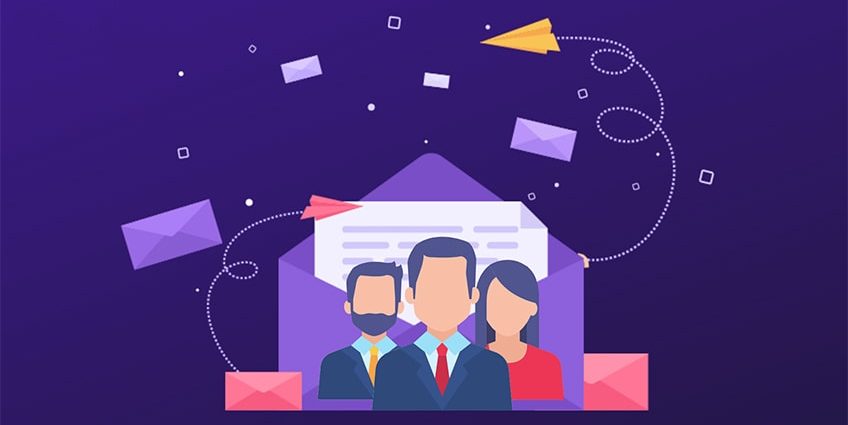Personalization is a must in email marketing, that much is clear. Personalization makes people more likely to open your email and shows that you know what they want and need. It makes readers more interested and more likely to take action, and it’s a pretty important part of a good lead nurturing strategy.
According to research done by Epsilon, 80% of consumers say they are more likely to buy something when they have a personalized experience. When it comes to where and how this personalization happens, half of marketing influencers say that email segmentation and sending personalized emails are their most effective ways to personalize. If you don’t make your emails personal, you’re probably losing customers to brands that do.
Personalizing your email outreach will make all the difference in how well it works. Below, we’ll talk about how to do it and some of the benefits you can look forward to if you do.
Why is it important to tailor emails?
It’s not always easy to get through all the noise in your inbox. If you want people to open, read, and interact with your emails, you need to make them stand out. One way to do this is to personalize them.
Marketers who use personalization in their emails have unique click rates that are 27% higher and open rates that are 11% higher than those who don’t. 52 percent of shoppers say that if a brand sends them an email that isn’t personalized, they’ll look elsewhere for their shopping needs.
Personalizing emails isn’t a surefire way to get more business. On the other hand, not personalizing your message is a quick way to make sure that people won’t pay attention to it. If you want more opens, clicks, and sales, personalization is one of the most important tools you can use.
How to Send Personal Emails
Using the person’s name instead of a generic “hello” is just the start of what makes an email personalized. Other unique things to think about are:
- List segmentation is the process of putting together groups of contacts based on key demographics and where they are in the buyer’s journey. This way, people only get content that is relevant to them.
- Reaching out to potential and current customers at the right time with content and offers that make sense for them.
- Adding a “human touch” means making it clear that an email is coming from a real person, not just a brand. This connection between people is at the heart of personalization, and just the “From” name has a big effect on whether or not someone opens an email.
- Automation, Drip campaigns and other automated methods use a person’s actions to decide what content to show them next. For example, you could send them a personalized ad after they sign up for something new or leave something in their shopping cart. You could also send them useful instructions that help them get started with a new product or service purchase.
Many of these things play a role in customization, and each of them is useful on its own. If you’re just starting out with personalizing emails, you should focus on one or two things at a time and then build from there.
How to make your emails unique
Here are some things you can do right away to make your emails more personal and help you connect with the people you send them to.
Know who you’re talking to.
You can’t make emails more personal if you don’t know who they’re for. Use a small business CRM to learn more about your audience’s actions and behaviors, pain points, needs, and other things. The more you know about who is getting your emails, the better you can segment your messages and make sure that the right people get the right content to move them further down the sales funnel.
Working with your sales team is an important part of getting to know your audience. Sales and marketing each have their own ideas about what prospects and leads want. By working together, you can find out more about what’s important and avoid the silos that often get in the way of effective outreach. From there, your marketing team can make content that helps with sales and use it to power your individualized email marketing.
Improve your content.
Think of your content strategy as a part of a bigger cycle of making things more personal. Your audience tells you what kind of content to make, and then the content you make tells your audience something. You need to know what kind of information your email recipients are looking for and what they need to know to become a first-time or repeat customer. In this area, too, it’s important to work closely with sales. The more you know about the content gaps that make it hard for your sales team to close a deal, the more you can fill those gaps with content that makes it easier to close a deal.
Personalize the features of your email
Segmentation and content may be the two most important parts of personalized email marketing, but they aren’t the only ones. The devil is also in the details, so you should also personalize some parts of each email you send.
- The headline says: When you use your name in the subject line, emails are 26% more likely to be opened. Some ways to do this are to put the person’s name in the subject line or to make it about something that’s very timely or important.
- CTA: Personalized calls to action, also called “smart CTAs,” are made for each person instead of for everyone at the same time. And if they’re done right, they can convert 202 times better than default CTAs.
- The “To” field: Sometimes, all you have to do is put in the person’s name. This is definitely something you should do in the “To” field and the greeting at the beginning of the email.
Marketing automation software is a great way to take the guesswork out of personalization. A good automation platform will help you figure out things like what pages your prospects visit, what content they download, and what they do on your site. All of that can help you figure out how much they know about your product and what they still need to learn.
To put it simply, personalized email marketing involves splitting leads into lists based on when they’re in the buying cycle and sending each list content that directly addresses their pain points. And both a customer relationship management (CRM) system and email marketing automation software can make these tasks much easier and more effective.
As you add more personal touches to your email, you can use analytics and A/B testing to figure out what works best. Some things will resonate with your audience more than others, so use data to find out what kinds of personalization give you the most consistently and positive results.
Why personalizing emails is a good idea
The whole point of sending emails is to get more sales, and personalization is how to do that. When your prospects feel like you understand them, you build trust with them over time. This makes them more likely to take the next step with your product. Personalization makes them feel safe and makes sure they have all the information they need to make a good purchase. It also gives them confidence that your product will fix their problem.
If you don’t think a company’s emails will be helpful, you won’t sign up for them. So give your audience what they want with high-quality content that is tailored to their needs. Personalized emails not only make outreach more effective, but they also strengthen the relationship between the brand and the customer by building trust and making the relationship more stable. Personalization shows that you’re paying attention and that you care, which are qualities that everyone wants from the brands they buy from.
More personalization means more connection. Personalization should be at the heart of your email marketing strategy so that you can reach your audience with the content they want.



